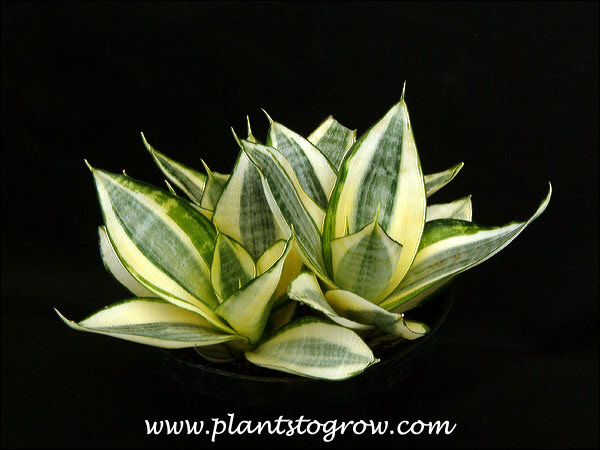| Description | Sansevieria ABC's This section contains general cultural information on growing Sansevieria. AKA: Snake Plants |
|---|---|
| Plant Type | Indoor Foliage, Succulents, Perennial Tender, Site author's observations |
| Hardiness Zone | 10 |
| Sunlight | They are tolerant of shade, low light conditions but prefers moderate to bright. In direct light they will burn or become faded |
| Moisture | Can go for long periods of time with out water, but prefers to be kept evenly moist to slightly dry. One time I forgot about 3 plants in the north window of a room, for 2 months. They never got watered and are still alive today. Not a recommended practice! |
| Soil & Site | average, well drained |
| Growing Media | average house |
| Temperature | average house |
| Flowers | In the greenhouse most of these plants flower but when grown indoors they tend not to flower. The inflorescences of whitish flowers are produced on long slender stalks. |
| Leaves | Most of the plant that is seen above ground is actually a leaf. The large root like structures under the surface are horizontal stems called rhizomes. |
| Stems | rhyzomes |
| Dimensions | Depends on the type of plant |
| Maintenance | Very little is needed just occasional re-potting when the plants get to large. They have very strong rhizomes and will crack almost any pot. |
| Propagation | The easiest and most common way is by division. Just knock the plant out of the pot and divide into section. Most of the plants will root from partial leaf cuttings which is a leaf cut into sections and rooted. The draw back to this method is, if the plant is a sport (genetic variation) it will revert back to its parent plant. I have rooted Futura and Golden Snake plant from partial leaf cuttings and they both have reverted back to S. trifasciata. I have rooted S. trifascita and S. cylindica and they have come true from the partial leaf cutting. Set very little seed but can be grown from seed. |
| Native Site | The genus Sansevieria consists of about 60 species indigenous to Africa, Arabia, and India. |
| Misc Facts | In 1787 this group of plants was given the name "Sanseverinia", in honor of the Prince of Sanseviero. In 1794 Thunberg corrected the spelling to its current name “Sansevieria". The leaves are made up of strong thin fibers and at one time, the USDA maintained a collection of these plants in hope of using the fibers to make rope. |
| Author's Notes | I have grown over a dozen different types of Sansevieria and all were non-demanding house plants. On a vacation to Hawaii, I saw these plants used in the landscape. Much different than from using them in zone #5. |
| Notes & Reference | #10-The Sansevieria Book (Hermine Stover) |

Cart

